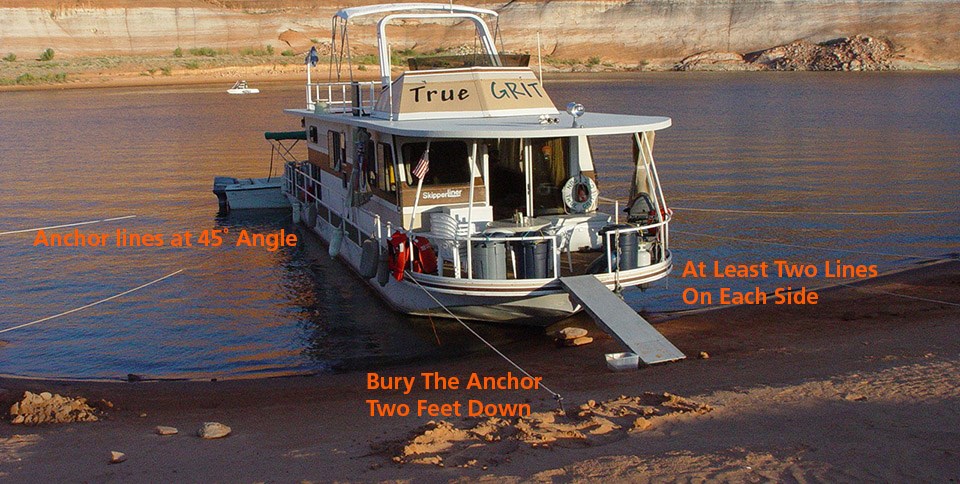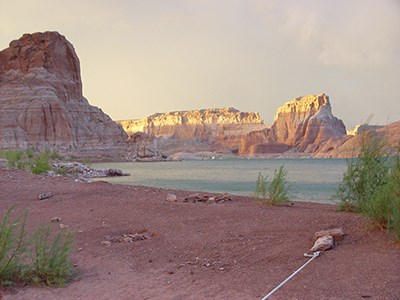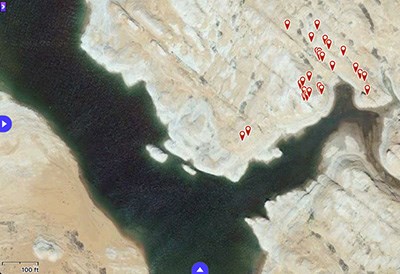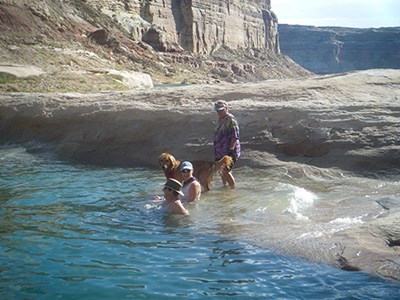How Should I Anchor My Boat?

NPS
Vessels may also utilize other alternative anchoring methods such as anchor bags. 
NPS Photos 
NPS Pin Anchoring / Houseboat StakingPin anchoring/houseboat staking is the act of anchoring vessels by placing a stake into a natural rock feature. This includes reusing existing pin anchors and/or holes. Anchoring vessels by pin anchoring is illegal because it impairs the resources. All units of the National Park Service are guided by the Organic Act. This Congressional mandate defines the dual mission of the National Park Service, both to conserve park resources and provide for their use and enjoyment in such a manner and by such means as will leave them unimpaired for future generations.
Determination: The practice of pin anchoring within the boundaries of Glen Canyon NRA is considered injuring, defacing, and disturbing to mineral, archeological, and paleontological resources. Pinning into sandstone creates a permanent hole. As lake levels rise and fall, water rapidly dissipates carbonate minerals from the pinning hole, weakening the surrounding stone. This increases the development of geological hazards and rock falls as the sandstone fractures and flakes at an increased rate. Glen Canyon NRA has over 2,500 documented archeological and paleontological sites throughout the park. Pin anchoring can cause irreversible damage to these resources. Pins sometimes become permanently lodged in the sandstone, posing a significant safety hazard to visitors and vessels. 
If I can't find a sandy beach it's not safe to anchor my boat without drilling a few holes.

NPS Image But the holes were here when I got here. I'm just reusing them.

Why else should I care?

What can I do to help prevent the destruction of Lake Powell's shoreline?
|
Last updated: August 30, 2024

